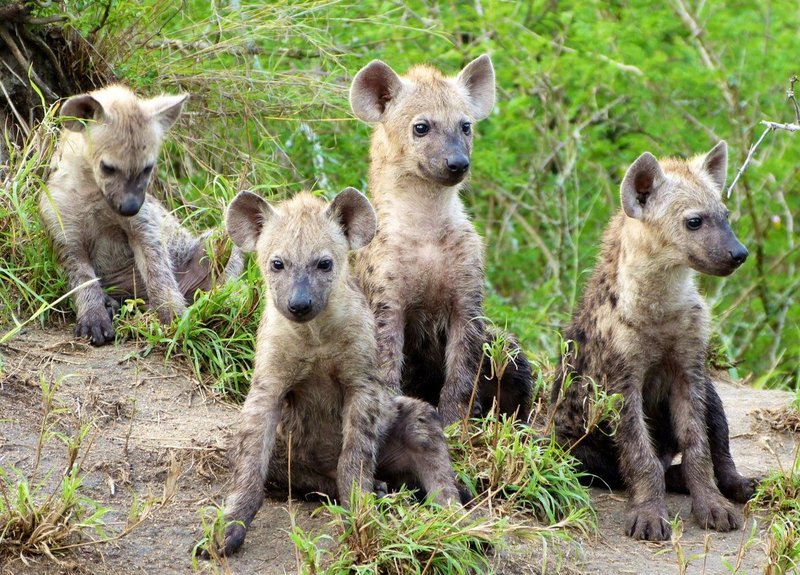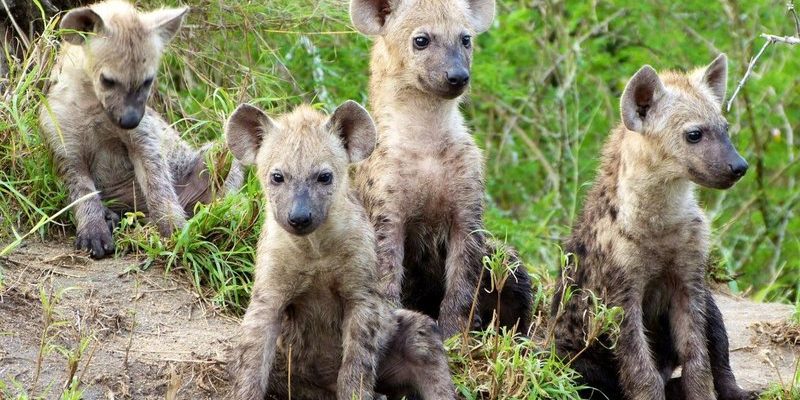
Hyenas are social animals, and their way of parenting is quite different from what you might expect. Unlike many solo parental species, hyenas thrive in clans—sometimes numbering up to 80 individuals. These clans are not just for show; they are integral to how young hyenas are nurtured and taught about the world around them. Let’s explore just how hyenas accomplish this task in the wild.
The Role of the Clan in Hyena Parenting
Hyenas are known for their strong social structures, and the clan plays a crucial role in raising the young. Each clan is led by a dominant female, and she has a say in many aspects of clan life, including parenting. When it comes to the cubs, it’s not just the mothers who do the nurturing; a whole community steps in.
This collaborative parenting means that young hyenas receive diverse experiences and lessons. For instance, while a mother is out hunting, other clan members often babysit the cubs. This not only allows the mother to provide for her young but also helps the cubs learn social skills and interact with various adults who can teach them different things.
You might be wondering how this helps the cubs. Well, having multiple caregivers means they get used to different voices, scents, and behaviors, all of which are essential for their development. In a way, they’re learning from the entire clan—kind of like how kids learn from teachers, family, and friends.
Cubs’ Early Days: Birth and Care
When hyena cubs are born, they’re typically part of a litter that can range from one to four cubs. The birthing process takes place in a den, which is often a secluded spot that the mother carefully chooses. Here, she can safely care for her newborns.
The first few weeks of a cub’s life are crucial. They’re born blind and entirely dependent on their mother for food and warmth. During this time, the mother is extremely protective. She won’t leave the den much, as she knows her cubs are vulnerable. You can imagine it like a new parent who is hesitant to let anyone else hold their baby!
After about three weeks, the cubs begin to open their eyes and crawl around the den. This is when the fun really starts! They become curious and start exploring their surroundings. At this stage, the mother introduces them to the rest of the clan, slowly allowing others to meet and bond with her young ones.
Learning Through Play
Playtime is incredibly important for hyena cubs, and it’s not just for fun—it’s how they learn vital survival skills. You might see them wrestling, chasing, or even play-fighting with each other. This behavior isn’t just cute; it teaches them how to defend themselves and work together as a team.
As the cubs grow older, they start imitating adult behaviors. For example, they’ll try to mimic the way their mothers hunt or interact with the rest of the clan. This is how they learn about foraging and social dynamics without any formal “classes.” In wild settings, learning through observation and participation is critical for their survival.
Additionally, these playful interactions help them establish their place within the clan. Just like kids on a playground, they figure out who’s who and build friendships that will last a lifetime. This social networking is key to their future success as adult hyenas.
Feeding the Young: The Role of the Mother
Hyena mothers are dedicated caretakers, and food plays a significant role in their parenting. After the initial months of nursing, cubs begin to eat solid food, which is typically from their mother’s kills. This part of their development is fascinating because the mother will often bring back food specially for her young.
You might be surprised to learn that hyenas have a keen sense of teamwork when it comes to hunting. They hunt in groups, which often guarantees them a successful kill. Once a hunt is successful, the mother will bring back smaller parts of the prey for her cubs. This not only ensures they get enough nutrients but also teaches them about sharing and teamwork.
The cubs learn to recognize the smells and sounds of different prey, which is vital for their future hunting skills. As they grow stronger, they start to join the adults in learning how to hunt, preparing them for eventually taking on this responsibility themselves.
Survival Challenges for Hyena Cubs
While hyenas are resilient, raising young in the wild isn’t without challenges. Cubs face threats from predators, disease, and even rival clans. Here’s the thing: the first year of a cub’s life is the most precarious. Only about half of the cubs typically survive to adulthood, so the clan’s support system is critical for their success.
One major challenge is competition. When food is scarce, older siblings or other clan members may compete for resources. It’s a tough lesson, but it helps cubs learn the harsh realities of their environment. The mother often intervenes, ensuring her weaker cubs are fed—this is just one example of the delicate balance that hyena parents must maintain.
Another concern is the threats from rival hyena clans. Territorial disputes can turn violent, and mothers must quickly protect their young during these encounters. They often teach their cubs to keep a low profile during conflicts and find a safe spot to hide. It’s all part of the tough love necessary for survival.
Transitioning to Independence
As cubs reach maturity, they’ll spend around one to two years with their clans before venturing out on their own. This transition is a bittersweet moment for mothers who have devoted themselves to raising their young. During this time, the cubs gradually take on more responsibilities, including hunting and contributing to the clan.
You might wonder how cubs learn when it’s time to leave the nest, so to speak. Well, the clan dynamics often dictate this. As they mature, they might feel the urge to seek out their own territory, especially if they have reached their rank in the social hierarchy.
This step is essential because it allows for the expansion of their species and helps prevent overpopulation within a territory. The young hyenas take what they’ve learned and seek to establish their own role in the vast world of hyenas.
Why Understanding Hyena Parenting Matters
So, why should we care about how hyenas raise their young? Understanding their parenting methods offers insight into the complex social structures of these animals. It shines a light on the importance of community—something that resonates with us as humans, too.
By observing hyenas, wildlife enthusiasts can gain a better perspective on the delicate balance of ecosystems. Each role in the clan plays a part in keeping the environment stable. When one aspect changes, such as a decline in prey or habitat loss due to human activities, it affects the entire system.
Plus, learning about hyena parenting helps counteract the often negative stereotypes that these animals face. Just like any other species, they have unique strengths, and they function effectively in their ecosystems. By sharing these insights, we can foster a greater appreciation for the animal kingdom and the intricate behaviors that connect us all.
In conclusion, the way hyenas raise their young is far from ordinary. Their community-focused approach to parenting, the challenges they face, and their remarkable resilience make them unique creatures in the wild. Hopefully, this exploration into hyena life has given you a new appreciation for these fascinating animals and their parenting techniques.

